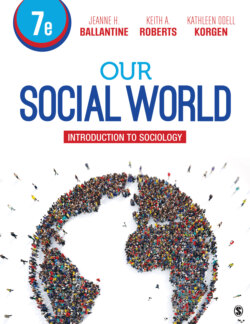Читать книгу Our Social World - Kathleen Odell Korgen - Страница 156
Isolated and Abused Children
ОглавлениеWhat would children be like if they grew up without human contact or only negative interactions? Among the most striking examples are the few cases we know of severely abused and neglected children whose parents kept them isolated in cellars or attics for years without providing even minimal attention and nurturing. When these isolated children were discovered, typically they suffered from profound developmental disorders that endured throughout their lives (Curtiss 1977; K. Davis 1947). Most experienced great difficulty in adjusting to their social world’s complex rules of interaction, which people normally start to learn from infancy onward. Recent medical studies also show how social isolation and deprivation in early life harm brain development and can result in mental health problems (C. Y. Johnson 2012).
In case studies comparing two girls, Anna and Isabelle, who experienced extreme isolation in early childhood, Kingsley Davis (1947) found that even minimal human contact made some difference in their socialization. Both “illegitimate” girls were kept locked up by relatives who wanted to keep their existence a secret. Both were discovered at about age 6 and moved to institutions where they received intensive training. Yet the cases were different in one significant respect: Prior to her discovery by those outside her immediate family, Anna experienced virtually no human contact, was fed only milk, and when found was barely alive. She saw other individuals only when they left food for her. Anna could not sit, walk, or talk and learned little in the special country school in which she was placed. When she died from jaundice at age 10, she had learned the language and skills of a 2- or 3-year-old.
When found, Isabelle was physically ill from an inadequate diet and lack of sunshine. She made only croaking sounds and gestures. During her first 6 years she lived in a darkened room with her deaf-mute mother, who provided some human contact. Isabelle, unlike Anna, did progress. She learned to talk and played with her peers. After 2 years, she reached an intellectual level approaching normal for her age but remained about 2 years behind her classmates in skill and competency levels. By age 14, she was attending regular school, participating in social activities, and was near normal for her age (K. Davis 1940, 1947; Foley and Harris 2014).
Contemporary cases of children neglected or abused in their family settings, forced into slavery or prostitution, or fighting wars reinforce the importance of early social interaction. Although not totally isolated, these children experience problems and disruptions in the socialization process. They have to deal with socially toxic abusive, violent, and dead-end environments with harmful developmental consequences for these children (War Child 2014). Consider the case of the Chibok schoolgirls from northern Nigeria’s Borno State. On April 14, 2014, 276 students were kidnapped by Boko Haram, an extremist Islamic terrorist organization, with more girls kidnapped from Dapchi, Nigeria, in February 2018. Although a few escaped, most of the girls were forced into sexual relationships and made to marry Boko Haram fighters. Some girls were forced to fight alongside their captors or to become suicide bombers. The socialization process for these girls became very negative, something they will live with for life (The Guardian 2018).
Other young children have been forced into armies as soldiers or to work on plantations as slaves. A recent video, Invisible Children, went viral on YouTube, showing the plight of children kidnapped by Joseph Kony’s Lord’s Resistance Army into a world of drugs, sex, and violence (Terra Networks 2013). Most will have a difficult time integrating back into society after their traumatic experiences, even if they have a chance to do so. Some organizations are trying to help the released children readjust to their societies.
These cases illustrate the devastating effects of isolation, neglect, and abuse early in life on the socialization process. To develop into social beings, humans need more from their environments than food and shelter. They need positive contact; a sense of belonging; affection; safety; and someone to teach them language, knowledge, and skills. Through this socialization experience into the world, every person develops a self. Before we examine the development of the self in depth, however, we consider the complexity of socialization in the multilevel (micro, meso, and macro) social world.
